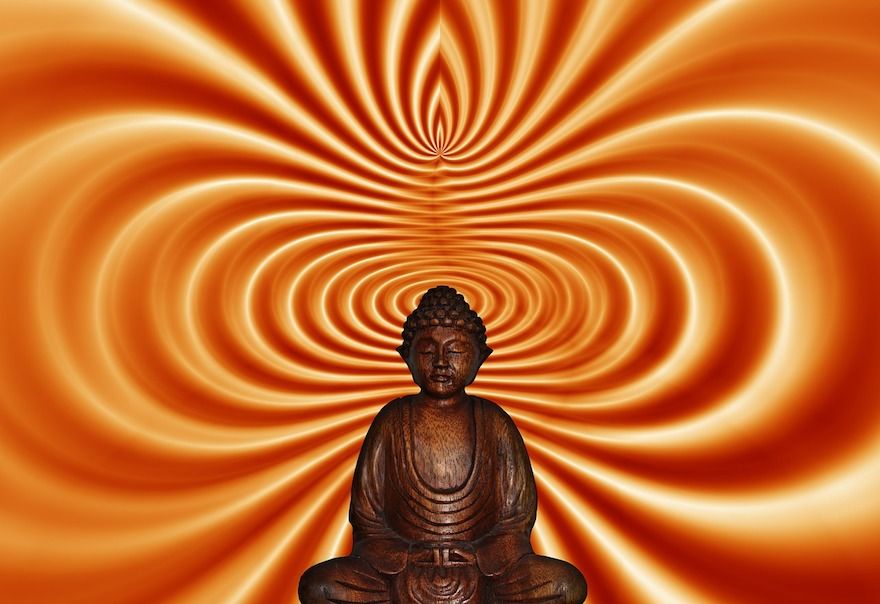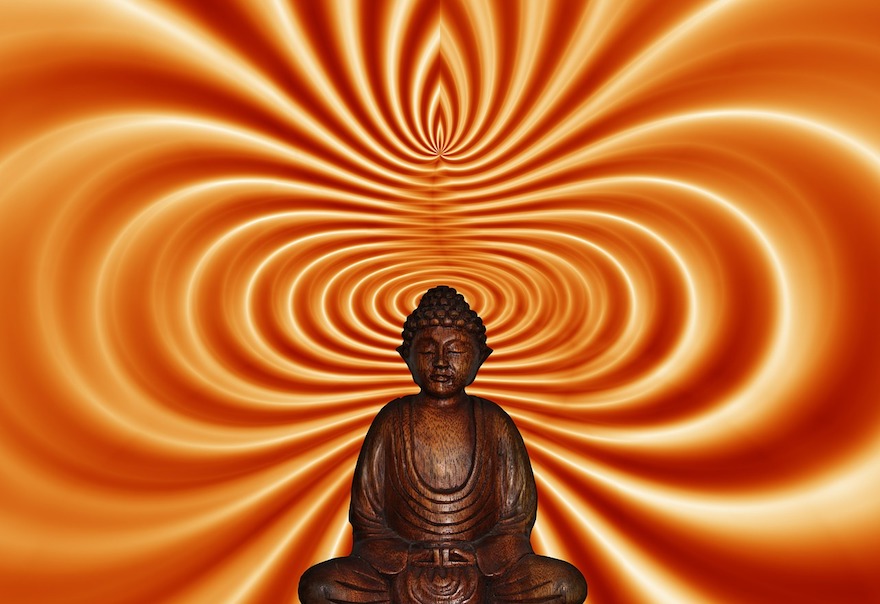A Simple Technique to Calm Your Anxiety
This simple stress relief technique is what Viktor Frankl used that allowed him to survive the holocaust and maintain his mental balance. Learn more.

The economy is spinning out of control. People are losing their jobs. Trust in banks and brokerage houses has been eroded, and savings are in jeopardy. So how is it that millions of people are still smiling?
No matter the stressors in your life or the up and downs of the stock market, the secret is learning how to deal with anxiety can help you stay calm and in control of your state of mind — no matter how anxious you feel or chaotic your life gets.
This secret is what Viktor Frankl used that allowed him to survive the holocaust and maintain his mental balance. It is what author Napoleon Hill weaves into his famous advice on achieving financial success in Think and Grow Rich.
And it is something that you have within yourself right now, like a gift, all wrapped up waiting for you to unwrap and put into immediate use.

And best of all, anyone can learn to use this gift. It is so simple that once it is explained, you might think, I knew that.
But the really amazing thing about this gift is that it never gets used up. The more you use it, the more powerful it becomes — until you can control your emotional state at will, almost without conscious thought.
The powerful gift you have within you right now is the power of your own mind. It is the ability to use mindfulness exercises to create thoughts that empower, rather than ones that tear you down or trigger fear, worry, and anxiety.
The key is to start with your thoughts because, once you are aware of what is triggering emotions, you can change it.
Here are 4 mindfulness exercises and stress relief techniques for how to deal with anxiety.
1. Write down the facts of the distressing event
What is actually happening right now in the present moment?
2. Make a list of each thought, picture, or story that is triggered by the event
Stay in a curious state as you let the negative thoughts come to the surface. Write down any fears that you are worry might happen in the future. Notice if any past memories or experiences are triggered by the current situation.
What memories or images does this event bring back to you? No matter how much you might believe the thoughts to be true, they are just one possible way things might turn out. Once you have a list of negative thoughts, stories, and pictures, you are ready for the next step.
3. Figure out your possible solutions
For each negative thought you have listed, write down two possible, positive thoughts or possible, positive outcomes. Repeat this for each negative thought on the list, until all your negative thoughts have two possible positive responses.
You are far more used to telling yourself negative stories than positive ones. So it may feel a little strange at first to accept these positive thoughts as readily as you did the negative ones.
At first, this technique may take some conscious effort. With practice, you’ll find that the positive thoughts start to pop up on their own — just as the negative ones once did.
By harnessing your powerful mind and imagination, you can create a whole range of positive possibilities. Use them to replace the negative thoughts and you’ll find the cycle of worry changes to a new cycle of hope, calm and power.

The three steps in this technique are so powerful you might experience an immediate lifting of your spirit after practicing them for the first time. If this doesn’t happen for you, keep practicing and see what happens after three weeks. Sometimes, it may take more time to unravel old patterns.
If you find that even after three weeks the negative thoughts are still creeping into your mind, it might mean there are more deeply rooted triggers or beliefs that are needed to bring about the life-changing experience you're seeking.
Even if you're one of the people for whom results take a little longer, make the decision to continue doing these three steps, and you might surprise yourself with the results.
4. Recognize when you're feeding your own anxiety
Sometimes, your thoughts move through your mind so quickly you don’t even realize you had one until your heart is pounding or your body responds with other symptoms.
Your thoughts, both conscious and unconscious, have a powerful impact on your reactions. People with panic, worry, and anxiety typically have scary thoughts that add to their physical symptoms.
Sometimes, these thoughts move so quickly you might not be able to stop them. But what you can do is recognize the bodily symptoms.
Fearful thoughts stimulate the body, which then responds with more anxiety-producing chemicals. This, in turn, adds to more scary thoughts about something being terribly wrong, which adds to more bodily symptoms. Around and around it goes, wreaking havoc on the entire mind and body.
Since the mind affects the physical body, using the mind to stop this vicious cycle and heal the body is one of the most productive stress relief techniques for how to calm anxiety, worry, and fear. And the easiest way to do this is by rating the intensity of your feelings and changing your breathing patterns.

Here's how to deal with anxiety by determining the intensity of your feelings and then changing your breathing patterns to overcome it.
- Stop and take a moment to rate your level of anxiety.
- Use the rating gauge of 0 (calm) to 10 (anxiety attack)
- Close your eyes and notice any physical areas of tension.
- Breathe, changing the pattern.
- Take a two-second inhalation.
- Hold for a slow count of four.
- Exhale for the court of eight or more with your mouth open. (The longer the exhalation the better.)
- Repeat the breath again. In through the nose for a count of six.
- Hold for slow count of four.
- Exhale count of eight or more. Keep your mouth open, making a soft haaa sound.
Repeat this breathing exercise three more times, and then rate your level again:0 (calm) to 10 (anxiety attack).
Use this new breathing pattern three times a day and any time you feel anxiety or stress. Most people feel the difference after the first use. And after two weeks, you’ll notice that there is a bigger shift in your stress level.
There are many different tools you can use to create a calming in the mind and body, and this is a good one to start with.
As you calm the mind, your focus improves, creativity flows more easily, and you self-confidence builds as you feel you can take back in control.
Although it’s a very simple thing to do, you’ll find changing your breathing pattern is really powerful. The reason it works so well is that when you change your breathing pattern it sends a message to the brain that is interpreted as, "Things are OK," which can lead to calmness and peace, despite living in a chaotic world.
READ NEXT ---> How Angels Can Help With Depression and Anxiety
Source: this article was orginally written by Audrey Sussman and published on November 8, 2018 on yourtango
Original Title: 4 Mindfulness Exercises For Calming Your Anxiety In This Chaotic World
Audrey Sussman, Ph.D., is a nationally-recognized seminar leader and author who, after years of study and practice dealing with her own anxiety, created a transformation system for the relief of panic, phobias, migraines. For more tips on calming your mind, you can view her free seven-minute video here.
Please Note: this article has been re-posted without prior written consent by the original Author. Link to the original article and site can be found above this disclaimer. If you are the Author of this post and you think that we are not re-posting it under the realm of 'fair-use', please contact us here
Pictures by Pixabay
